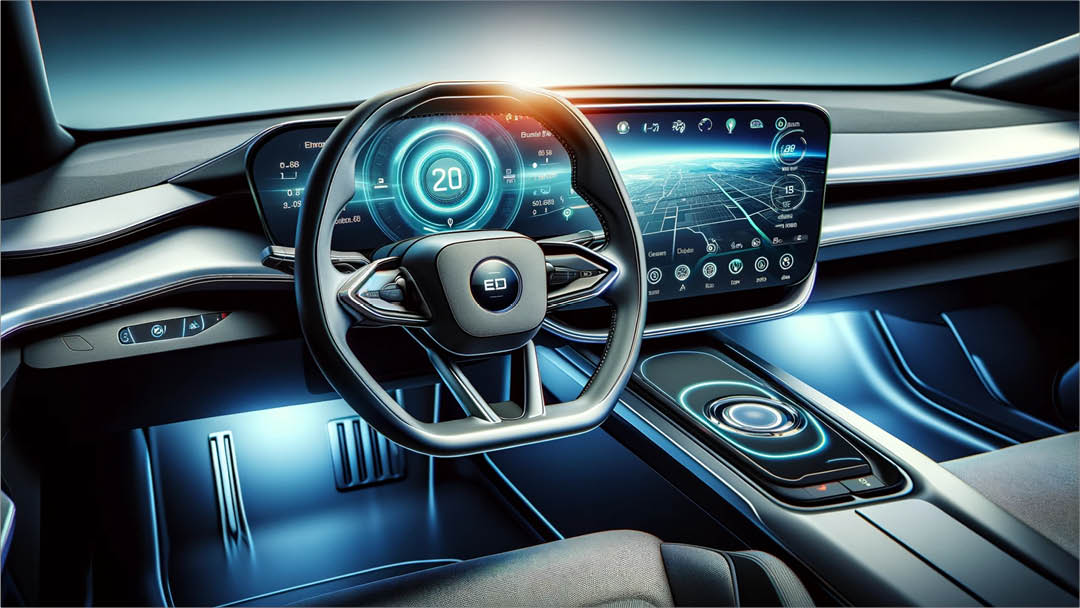In Brief
- Middleware is the essential software layer that bridges the gap between your digital cockpit’s user interface and the underlying systems.
- It ensures seamless operation, manages communication between different components, enables connected features, and must prioritize safety and reliability.
- Acsia Technologies specializes in robust middleware solutions, ensuring a smooth, secure, and integrated experience within the digital cockpit.
The sleek touchscreens, advanced voice assistants, and vibrant displays of your digital cockpit are what capture your attention. However, beneath the surface lies a critical piece of the puzzle: middleware. This software layer is the unseen conductor, orchestrating the complex interactions that make your in-car experience enjoyable, safe, and connected. Let’s explore how middleware shapes the way you interact with your vehicle.
What is Middleware?
Imagine your digital cockpit as a bustling city. The hardware components – screens, processors, sensors – are like the roads, buildings, and infrastructure. The apps you interact with (navigation, music, climate control) are like the city’s residents, each serving its own purpose. Middleware is the power grid, traffic management system, and communication network all rolled into one. It ensures:
- Traffic Flow: Middleware directs data and commands between the various components, ensuring nothing gets lost or delayed.
- Resource Management: Similar to how a power grid distributes electricity, middleware allocates computing power and memory to different apps and processes, optimizing performance and preventing crashes.
- Communication: Your instrument cluster needs to know your navigation route. Your media player needs to pause when you receive a call. Middleware is the ‘interpreter’ allowing different parts of your cockpit to understand each other.
Key Functions of Middleware in the Cockpit
Let’s break down the specific ways middleware makes your cockpit experience seamless:
- Connects Apps to Hardware: When you tap an icon, swipe on the touchscreen, or use a voice command, middleware translates your input into instructions the car’s systems can understand. It also takes data from sensors (speed, GPS location, etc.) and feeds it back into the apps.
- Manages Communication: Different parts of your cockpit need to ‘talk’ to each other constantly. Middleware coordinates this complex exchange of information, ensuring data reaches the right destination at the right time.
- Ensures Reliability and Responsiveness: No one likes slow, glitchy software. Middleware carefully manages system resources, preventing lag and making sure your interactions with the cockpit feel snappy and fluid.
- Enables the Connected Cockpit: Over-the-air updates, V2X communication, remote diagnostics, and other connected car features wouldn’t be possible without robust middleware acting as the digital backbone.
The Unique Challenges of Cockpit Middleware
Developing middleware for the automotive industry comes with specific requirements:
- Safety-Critical: A malfunctioning navigation app is frustrating; a malfunctioning middleware layer could be dangerous. Automotive middleware must undergo rigorous testing and verification to ensure absolute reliability.
- Compatibility: Cockpits integrate a wide variety of components, from displays running different operating systems to specialized sensors using unique communication protocols. Middleware needs to be the ‘universal translator’.
- Scalability: Vehicles are on the road for years. Middleware needs to be flexible enough to accommodate new features, updates, and potential hardware changes over the car’s lifetime.
Acsia: Your Middleware Partner
Acsia Technologies understands the complexities of developing middleware for modern cockpits. We focus on:
- Robustness and Reliability: Our middleware undergoes rigorous testing to ensure it performs flawlessly under demanding conditions.
- Platform Integration: We have experience in integrating with various operating systems (Linux, Android, QNX, etc.) and hardware architectures.
- Security: Data security is paramount. Our middleware includes protection mechanisms to safeguard your vehicle and user information.
Ready to ensure a seamless and connected experience within your digital cockpits? Contact Acsia Technologies to learn more about our middleware solutions. Visit our website [link to Acsia’s relevant offerings] to discover how we can help.










